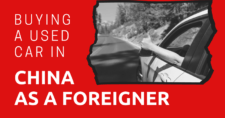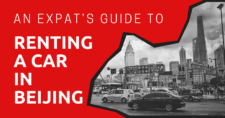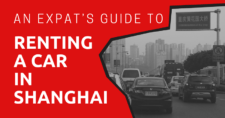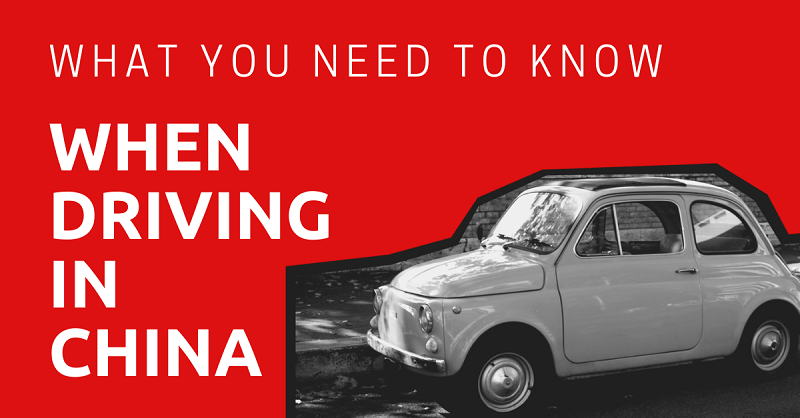
The Middle Kingdom is full of breathtaking landscapes, bustling cities, and everywhere in between. This guide illustrates what you should know about driving in China. From the art of driving itself, to navigation tools at your disposal, and other things you should prepare yourself for before you get behind the wheel. We hope to show you that driving in China is not as difficult or scary as you may think.
This article will take approximately 20 minutes to read. Don't have the time right now? No worries. You can email the ad-free version of the article to yourself and read it later!
Disclaimer: This article may include links to products or services offered by ExpatDen’s partners, which give us commissions when you click on them. Although this may influence how they appear in the text, we only recommend solutions that we would use in your situation. Read more in our Advertising Disclosure.
Contents
- Who Can Drive in China?
- What License You Need
- General Traffic Rules
- Road Conditions
- Top Driving in China Tip
- Navigating the Major Cities
- Your Biggest Driving Obstacles in Chinese Cities
- Urban Driving
- Rural and Country Driving
- Dealing with Accidents
- Emergency Numbers
- Other Things to Watch Out for on the Road
- Getting Petrol in China
- Charging and Driving Electric Cars
- Now, onto You
Who Can Drive in China?
Anyone over the age of 18 can drive in China as long as they are healthy enough and can prove so by passing the health and physical examination which is a requirement for receiving a Chinese driver’s license. That’s right, you MUST have a Chinese license to operate a vehicle in China. You must pass the Chinese driving test which is both practical and written, but don’t worry, it is in English.
It is not legal for car rental companies to lease a car to anyone without a Chinese license. You also cannot register a car in your name if you buy one without a Chinese driver’s license. International and other foreign licenses are not recognised in China.
What License You Need
You will need to earn a Chinese driver’s license before you’re even eligible to rent, register, or buy a car in China. If you are not staying in China for long, you can easily apply for a Temporary Provisional Driving Permit. If you are going to be in China for more than a few months, and you will hold a residence permit, whether on a work, student, or family visa, you will be eligible to apply for a permanent driver’s license in China. Learn how to get your Chinese driver’s license before you even think about buying or renting a car in China. You will need to get the right category of driver’s license to match the vehicle you intend on driving.
General Traffic Rules
In China, they drive on the right-hand-side. So if you learned to drive on the left, you might want to take a few driving lessons before you hit the road.
Speed Limits
Speed limits are based on road types and conditions and typically range from 30 to 40 kilometers per hour.
In cities; the upper limit of speed is usually 70 – 80 km/h (43-50 miles/h) on the main roads in the city and 80 km/h (50 miles/h) mph on expressways.
For urban expressways, the speed limit usually tops out at about 100 km/h (62 miles/h). Expect the upper-speed limit to hover around 120 km/h (75 miles/h) regardless of province (the speed limit measure is consistent across all rural provincial zones).
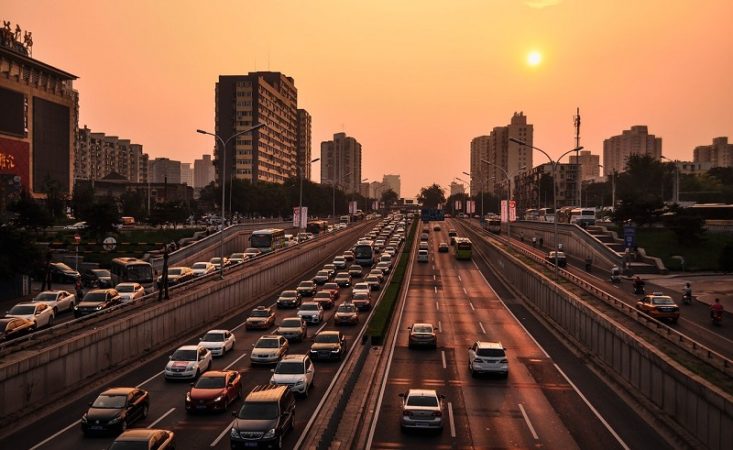
Radar speed zones and speeding cameras can be used to monitor drivers for speeding or other traffic violations in China and there are stiff punishments for exceeding the speed limit. For example; you can expect to pay 200 CNY if your speed exceeds 10 km/h.
Bike Lanes
Most Chinese cities have very wide lanes for e-bike and bicycle traffic. These lanes are wide enough for a car (and you will see cheeky impatient car drivers in them from time to time) but do not slip into bad habits. These lanes are strictly for 2- and 3-wheeled vehicles and you will be fined at least 100 RMB if caught (by cop or camera) driving your car in one. You will also lose license demerit points. Also remember that if you hit a bike or pedestrian, you will be in the wrong as a car driver and in very hot water. Driving in a bike lane is not worth that risk.
Parking
Not all signs will be in English, but the important ones will be clear. As is common around the world, if you can park, there will be a blue sign with a P. If you can’t park, there will be a red sign with a crossed out P.
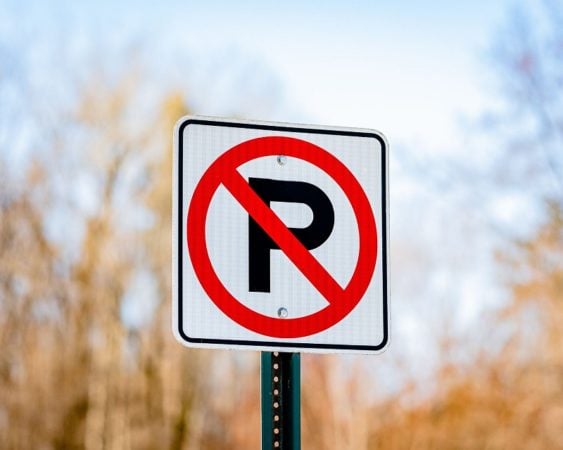
The cost of parking in China for roadside parking is usually 10 RMB ($1.50) for the first hour and 15 RMB for each hour after that. Underground or off-street car parks charge between 6-8 RMB per hour. Usually as you are pulling up to a space, a parking attendant will miraculously appear to mark your car with a ticket and collect the money when you get back to your vehicle.
Road Conditions
Given the economic differences and magnificent geography of the country, drivers might experience a wide spectrum of qualities of roads. Thus be prepared to encounter different qualities of streets, paths, byways, etc.
Transportation authorities do a pretty solid job of maintaining roads and bridges. But if you’re in the more remote or less populated parts of the country, gravel, and dusty roads are plentiful in these areas.
In general, metropolises along the east coast of China are highly developed in infrastructure. One prime example of this is the transportation system within southern China, known as the Greater Bay Area.
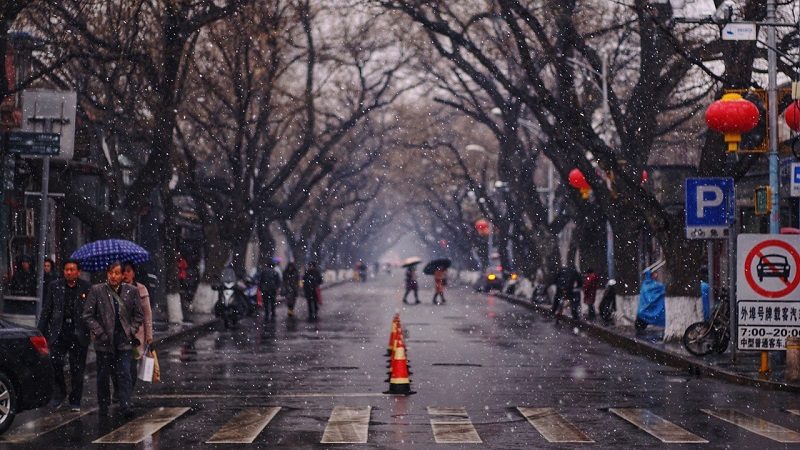
The GBA interconnects 9 key cities in Guangdong province, Hong Kong, and Macau via efficient highways and bridges. A matter of fact, the world’s longest bridge, the Hong Kong-Zhuhai-Macau bridge, stretches about 55 km (34 miles) mainly over the sea.
Within Guangdong province is Shenzhen, a clean city and very new at just over 40 years old. Thus it’s infrastructure is carefully developed, so expect smoother driving and less congestion (maybe even the best traffic) within its metropolis compared to other major cities.
Top Driving in China Tip
Anticipate the unexpected. I know, that doesn’t seem possible, but we promise, you will start to “get a feeling” when someone is about to change lanes without indicating. You will begin to realize that if there is a green light up ahead, cars around you will impatiently speed up to make it though. You will learn that you can’t always rely on other drivers to do the right thing, and you will be more alert, and more ready to brake or honk.
Navigating the Major Cities
Unless you’re a veteran cab driver and know your way around town, a GPS is a must for China driving, however, the Great Chinese Firewall is going to get in the way of your usual map and GPS behavior and you are going to have to adapt to some local versions to find everything.
Google Maps
All Google services, including Google Maps, will be blocked by China’s “Great Firewall” unless you have a VPN installed. Even with a VPN, Google Maps is limited.
Google Maps network-dependent functionalities such as searching for a location, planning a route, and navigating will not work because of your IP address. Although you can look up the address of many places, you won’t be able to rely on Google Maps for routing a live drive.
There is a mismatch between the road map, GPS position, and satellite pictures in China due to the deliberate offset caused by the Great Firewall, so do not rely on the positions shown on the satellite images. There is no Google Street View.
Apple Maps
Apple Maps is one of the very few apps that works fine in China and does not require a VPN, but is exclusive to iPhone users. If you are an Apple devotee, this might be your go-to map app. It even has detailed indoor maps inside China’s major airports and other large public places.
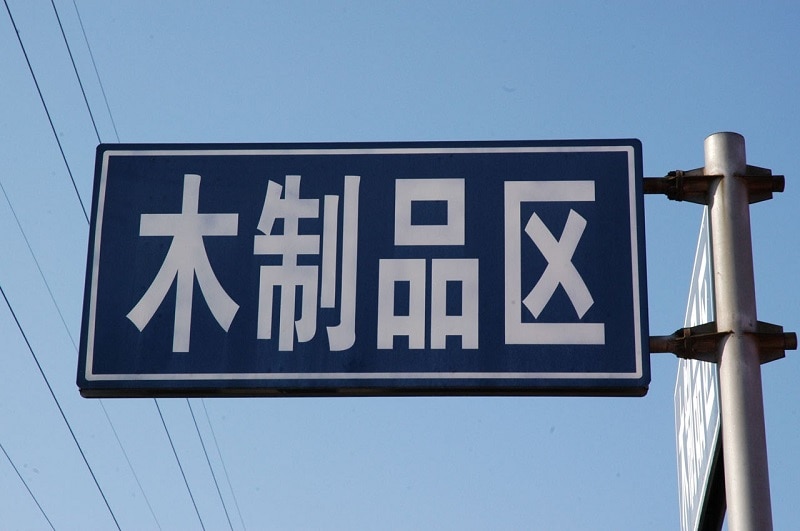
Maps.Me
This is a great alternative to Apple or Google Maps for China. It is available in English and allows you to download offline maps for huge areas. It also works with GPS. MAPS.ME is open-source software so be aware that anyone can add to it and edit it, sometimes this interferes with the accuracy of locations of some landmarks.
Then there’s WeChat maps, China’s mega app with a plethora of highly useful features, including a live “location” option. To utilize WeChat’s maps, you must first open the location button in the chat function.
When you’re seeking to meet up with friends who are already in a specific location, WeChat’s locator comes in seriously handy. The real-time location feature, while completely in Chinese, displays you how far away the other person is and how to get to them.
Didi
Didi is the Uber of China and it is mainly for hailing taxis and not for maps. HOWEVER, the launch of its English-only version has been a game-changer for most expats. The days of flagging down taxis are almost gone and another bonus is its insanely precise map.
Didi’s maps are completely versed in English (and Pinyin) and quite possibly the most accurate of all English maps within Chinese apps. If you find yourself close to but not quite seeing your intended destination, whip out Didi to pinpoint your location.
If driving, you could do a bit of a GPS hack by using Didi’s map and inputting your intended destination then following. As this is not the app’s intended use (yet, WeChat and Didi are evolving quickly), best to only try it with someone else in the passenger seat helping you navigate.
Baidu Maps
Baidu Maps is by far the most ubiquitous local map app in China, it is updated most often, and is regarded as the most accurate. If you understand Chinese or have a passenger who does and can co-pilot your drives, don’t worry about getting lost.
Gaode Maps
Another popular local map app. While they are excellent, they are only available in Chinese. Fortunately, English First have provided a fantastic guide to help you start navigating the Chinese way! Even with limited language skills, you can and will need to use local apps when you move to China. You will get the hang of it, we promise.
Your Biggest Driving Obstacles in Chinese Cities
Other car drivers will cause you headaches for sure. The seemingly endless lane changing, the mentality of only caring about what is in front of your vehicle and not whoever is behind you, the lack of turning signals, and the “I am number one!” driving mentality are all issues drivers face on China’ busy roads.
Pedestrians don’t always abide by jay-walking laws. Although more and more cities are increasingly implementing stoplight timers to help regulate the flow of traffic and pedestrians, you still need to be aware of walkers attempting to cross the street, even when they have a red light.
2-wheeled riders are very problematic. Decades ago, most city dwellers navigated the streets on bicycles around China but these days, your biggest speed demons on the roads are the electric scooters. There are still some bicyclists to watch out for, as China recently embraced bike sharing apps. Fortunately most cities have a dedicated side road for non-motorized vehicles like bikes and scooters, and even walking lanes for pedestrians.
Rickshaws still exist in China, but they are not what you might imagine. Just a century ago, rickshaws were commonplace. A carriage with protruding poles which extended over the shoulders of a human runner, these were the earliest taxis. Today they are motorized, and modernized. These 3-wheeled vehicles are somewhat unique to China, with an enclosed metal cart for two passengers attached behind a motorcycle and its driver.
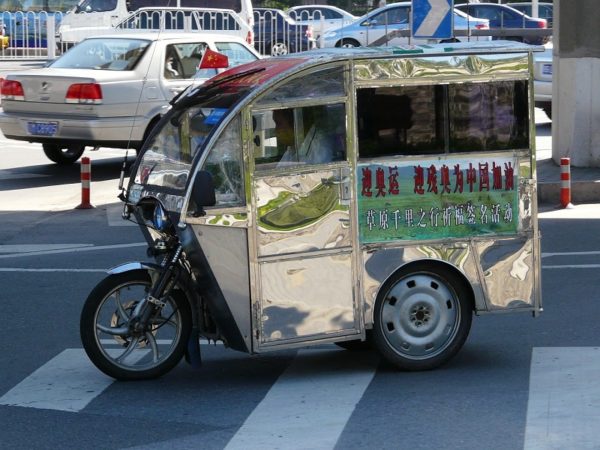
These makeshift vehicles were once common in Beijing and other cities, but there are fewer and fewer these days. Still, rickshaw drivers usually weave in and out of car lanes and bicycle lanes which can be very efficient for short distances and bad traffic, but potentially dangerous to unspectiving car drivers.
Urban Driving
Driving a car in a Chinese metropolis is not utterly terrifying, although merging into traffic takes a bit of courage. Seasoned expats say you just need to creep forward until someone lets you in. Drive as though you’re oozing through lane changes. In other words; driving like a local will make your commute smoother, and less frustrating.
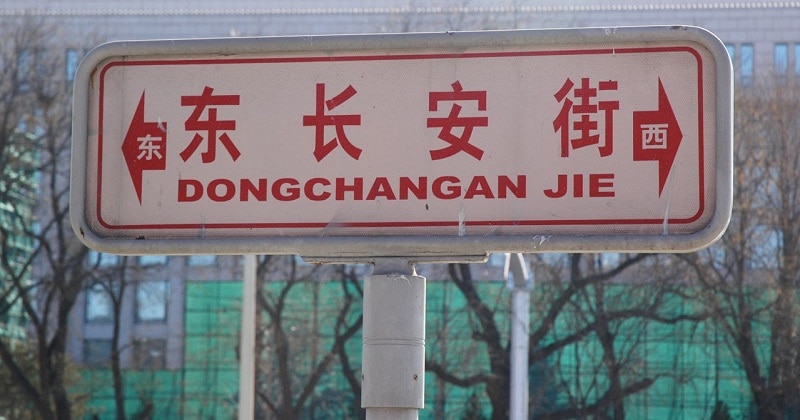
As with any busy city, sudden stops and goes are frequent. Generally speaking, there’s less usage of turning signals in the East as compared to in the West.
When it comes to road rage, there’s very little of it. In China, horns are honked all the time but it is done so in a non-violent manner, unlike driving in America where not only horns are honked and occasionally turn into a confrontational incident.
There’s not always a ‘right of way’ distinction between motorized and non-motorized vehicles within cities either. The hardest part is keeping an eye on all the pedestrians, bikes, and scooter riders to avoid hitting them.
Rural and Country Driving
Although driving around China’s countryside is a dramatically different experience to city day-to-day driving, it will be one of the most rewarding experiences you can do while living in China. But there are certain precautions that drivers should watch out for.
When driving between different cities or provinces be aware that speeding is common, GPS and internet connections may be spotty, and the laws you may be used to might not apply.
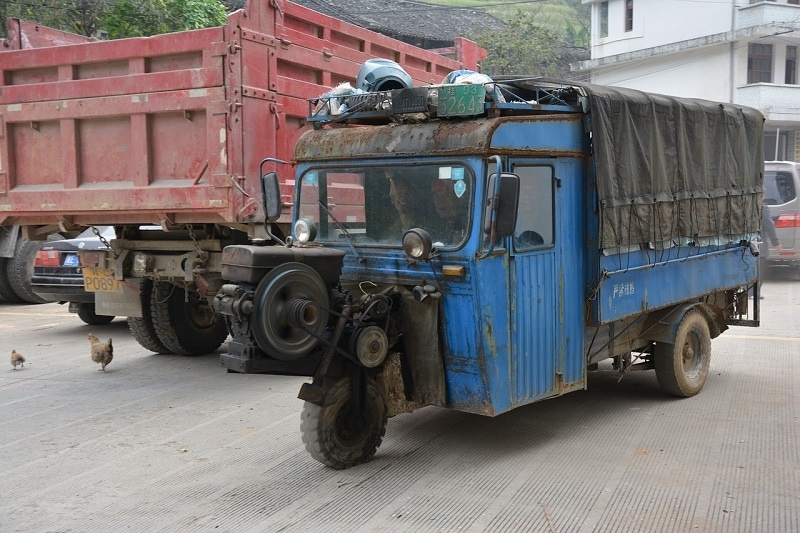
This often leaves drivers feeling anxious with an added sense of responsibility, fear, and defensive driving awareness. The temptation to speed is unavoidable for some, and then there is the possibility of getting into an accident.
So keep a cool head and stay alert. 50,000 to 70,000 people die in road traffic accidents every year in China, according to official statistics, with rural areas accounting for more than a third of all traffic deaths.
Please exercise caution and don’t take any chances or risky behaviors while driving in countrysides or smaller towns. That being said, driving through rural China is said to be a must-do for expats, and is on many’s bucket lists.
Dealing with Accidents
China does enforce strict, and potentially harsh rules for driving irresponsibly, especially once accidents happen. Make no mistake, speed limits, stop signs, and fundamental rules of the road are to be adhered to. Don’t try to cut corners, and don’t drive under the influence.
Drunk drivers who have accidetnaly killed or severely injured others could likely face the death penalty since driving while intoxicated. A zero blood-alcohol-rate, no booze before driving whatsoever, is law.
For fender benders; if it’s a minor scratch most people let the other driver move on since they don’t want to deal with the legal hassle. Or if it’s a little more damage than a scratch, they will stop and take pictures and send it to their insurance company.
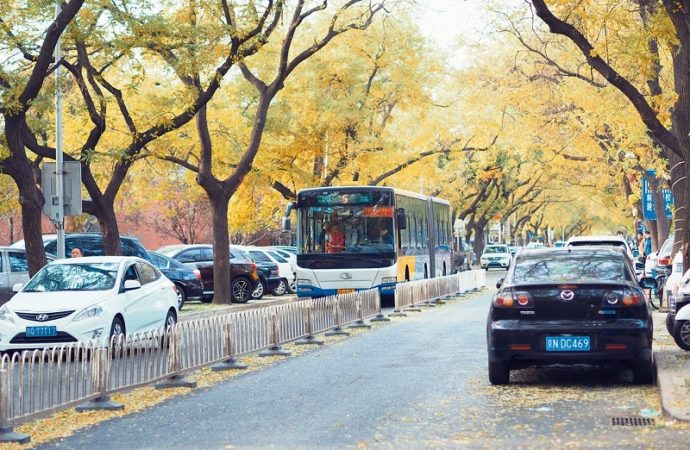
If you’ve been involved in a moderate to more serious accident with a possibility of injury you should stop, offer help immediately. and call the authorities.
Police will arrive and inspect the registration certificate and license of both parties and take pictures of the accident. At this time, you should call your insurance company which you signed with when you rented your car, which will be provided from the rental company.
However, you can expect mishaps on the road to go smoothly and easily if you follow the law.
Although you will inevitably hold up and cause congested traffic, it’s best you don’t try to settle on your own without the authorities, to also protect yourself against unjust lawsuits.
Be warned against attempting to flee a hit-and-run accident. China’s driving point system laws mandate thousands of CNY in penalties, and a permanent revocation of your driver’s license.
Emergency Numbers
Call these numbers if you are involved in a car accident, ask for English speaking service; the operator should reconnect you with an English handler if they hear a language other than Mandarin.
- 122 for traffic police
- 120 for an ambulance
- 119 for the fire department
Other Things to Watch Out for on the Road
Military vehicles: these are the only vehicles allowed to drive in the wrong lane and adhere to red lights as they choose.
Mobile phones: using while driving is forbidden nationwide and if caught, you will be penalized with the local authorities wherever the incident happens.
Getting Petrol in China
Finding a gas station to fill up should be easy and much like the same experience you’re used to back home. Simply pull up and fill up. Some gas stations allow you to pump yourself, while others are fully serviced. Then go inside to pay (cashless mostly) or at the pump.
Average Price of Petrol: As of August to November of 2021, the cost of gas in China averaged 7.37 at minimum, and a maximum of 8.13 CNY. The average global price of petrol during this period was around 10.51 CNY.
Petrol Brands: China consolidated its entire oil and gas production industry around three companies, expect to buy gas from one of these brands:
- PetroChina, the state-owned energy giant
- Sinopec (China Petroleum & Chemical Group)
- China National Offshore Oil Corporation (CNOOC)
Charging and Driving Electric Cars
China is also increasingly adopting electric vehicles with the mandate stating that the selling of fossil-fueled automobiles will be completely phased out by 2035.
Already today you will see thousands of Teslas on the road along with other Chinese counterparts like BYD, Xpeng, and NIO. Major cities now host plenty of electric car battery charging lots too. Tesla even has self-branded lots within international convention centers.
As of this writing, we can’t be sure of the feasibility of driving and charging electric cars in less developed provinces, but we are sure that this trend will continue to rise and spread throughout the country.
It’s cheaper to buy and register electric vehicles than it is gas powered cars, with a 10,000 CNY rebate to first time buyers.
Now, onto You
Adjusting your way of driving to fit local Chinese driving customs isn’t easy. You have to get acclimated to urban, suburban, and rural tempos. You have to navigate road signs that aren’t always in English. You have to learn new apps, and get your documents in order.
But most foreigners who’ve driven in China find that is not as challenging as it’s made out to be. While the roads feel chaotic, it is an organized chaos. Once you get the feel for it, you will be honking the horn like a local in no time!



